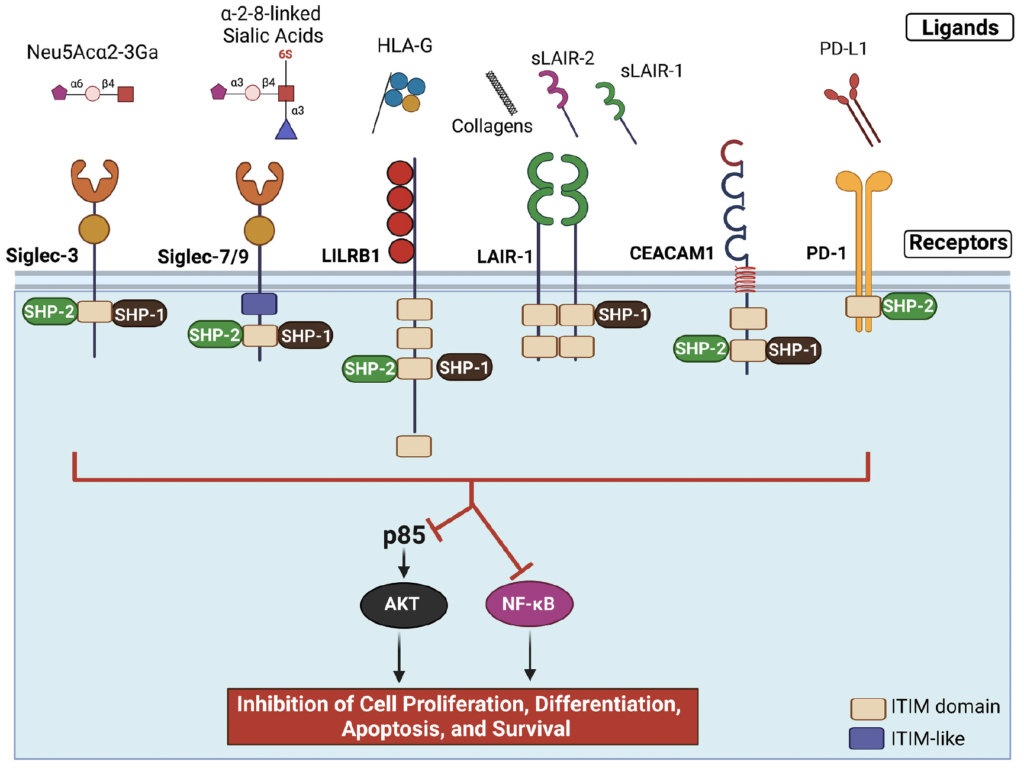Authors:
Lima K, Ribas GT, Riella LV, Borges TJ.
Abstract:
The regulatory arm of the immune system plays a crucial role in maintaining immune tolerance and preventing excessive immune responses. Immune regulation comprises various regulatory cells and molecules that work together to suppress or regulate immune responses. The programmed cell death protein 1 (PD-1) and cytotoxic T lymphocyte-associated protein 4 (CTLA-4) are examples of inhibitory receptors that counteract activating signals and fine-tune immune responses. While most of the discoveries of immune regulation have been related to T cells and the adaptive immune system, the innate arm of the immune system also has a range of inhibitory receptors that can counteract activating signals and suppress the effector immune responses. Targeting these innate inhibitory receptors may provide a complementary therapeutic approach in several immune-related conditions, including transplantation. In this review, we will explore the potential role of innate inhibitory receptors in controlling alloimmunity during solid organ transplantation.

Fig. 1. Overview of inhibitory innate receptors and their intracellular downstream signaling pathway. Schematic illustration of inhibitory receptors and their ligands regulating innate immunity. After the engagement of the receptors by their ligands, the intracellular ITIM or ITIM-like motifs recruit SHP1/SHP2 inhibiting downstream signaling of inflammatory factors like NF-kB and AKT. This inhibition of inflammatory cascades affects cell proliferation, differentiation, and survival. ITIM: immunoreceptor tyrosine-based inhibitory motif; Siglec: sialic-acid-binding immunoglobulin-like lectins; LILRB1: leukocyte Ig-like receptor; HLA-G: human leukocyte antigen G; LAIR-1: leukocyte-associated immunoglobulin-like receptor-1; sLair-1: soluble LAIR-1; sLair-2: soluble LAIR-2; CEACAM1: carcinoembryonic antigen-related cell-adhesion molecule 1; PD-1: programmed cell death protein 1; PD-L1: programmed cell death protein ligand-1; SHP-1: Src-homology 2 domain-containing phosphatase 1; SHP-2: Src-homology 2 domain-containing phosphatase 2; AKT: protein kinase B; NF-kB: Nuclear factor kappa B.

